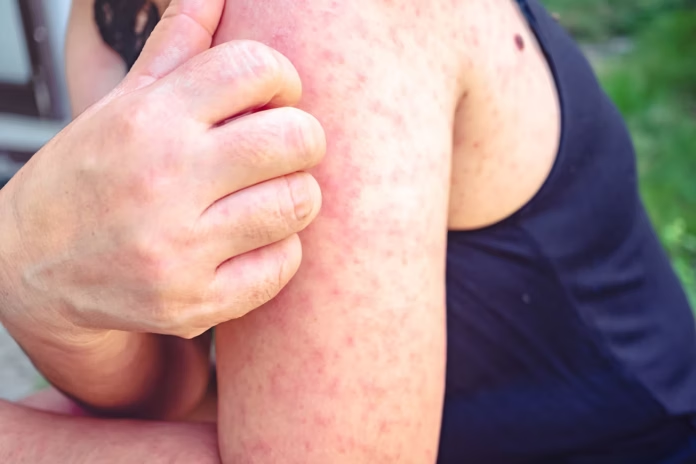Texas is facing a huge Measles attack. It was noticed that Texas has a sudden and worrying spike in cases of measles. According to the most recent data published by the Centers for Disease Control and Prevention (CDC) on April 4, the country has reported 607 confirmed cases of measles this year.
This is a record leap that has already beaten the total number of cases registered in 2024. But, how Measles is increasing all over the USA? And, why Texas is contributing a major part of the Measles Cases in the USA. That’s what we are going to talk about through this article.
Texas Represents Most of Infections
Of the 607 reported measles cases that have been confirmed, a whopping 481 have happened in Texas alone, according to the Texas Department of State Health Services. That makes Texas ground zero for the ongoing outbreak, with over three-quarters of all cases nationwide happening within the state. The virus has hit particularly hard in the South Plains and Panhandle areas, where a school-aged child became the first reported fatality attributed to the virus this year.
The health infrastructure of the state is now put under a lot of pressure, with public health departments, schools, and hospitals colliding to contain it. CDC staff have been sent to Texas from early March to help with containment and offer technical assistance in the field.
Also read: Trump Health Cuts Halted Amid States’ Legal Challenge
A National Issue with a Spreading Reach
Though Texas is the leader in numbers, the epidemic is hardly contained within a single state. Measles cases have now been reported in 21 states, 93% of which are linked to known outbreaks. Kansas is another state with its own burgeoning crisis, with 23 reported cases in its southwest region, the Kansas Department of Health and Environment reports.
This nationwide spread is of great concern to health officials who worry about a cascading effect if nothing is done in the short term to enhance vaccination outreach and public education. Most of the infected have received no previous measles immunization, which is one of the most effective protections against the disease.
Vaccination Status Raises Alarms
The most scary statistic exposed by the CDC perhaps is that a whopping 97% of measles cases reported have either unvaccinated people or those of unknown vaccination history. These occur among children as well as adults, implying both public and recording gaps in mass immunization exercises.
Measles, although preventable with a two-dose vaccine regimen, is very contagious. It can survive in the air for up to two hours after an infected individual coughs or sneezes and can cause serious complications, particularly in young children, such as pneumonia, brain swelling, and even death.
Health Advisory and Federal Involvement
As a reaction to the deteriorating situation, the CDC has released a national health advisory, specifically targeting the outbreaks in Texas and New Mexico. The agency stressed the need to keep MMR (measles, mumps, rubella) vaccinations current for all age groups, particularly school-age children.
Efforts to monitor and contain the spread are being undermined by misinformation and vaccine reluctance, which have contributed to falling vaccination rates over the past few years. Public health campaigns are being intensified in impacted areas to dispel fears, counter misinformation, and promote timely immunizations.
Conclusion:
The recent outbreak of measles cases nationwide, especially in Texas, is a stern reminder of the need for vaccination and preparedness in the public health arena. Although most of the infections are still scattered within outbreak-related areas, nationwide spread can still occur without immediate and drastic action.
Public health authorities call on parents, schools, and communities to redouble their efforts to apply preventive measures and achieve full coverage of vaccinations in order to protect vulnerable populations. With cooperation among federal and local governments, the next several weeks will determine if this outbreak will be brought under control—or whether it represents the start of a larger public health crisis.








